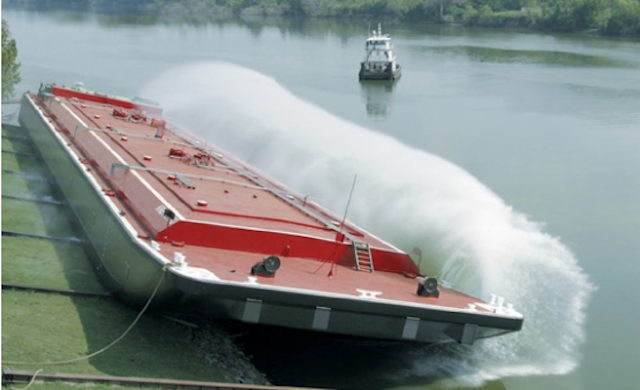The high cost of building new barges and the labor to crew tows have been a helpful development for the inland barge industry, keeping barge rates high and preventing an overbuilding of bottoms.
After two difficult months this winter when the barge industry was hit hard by the Covid-19 omicron variant that sidelined crews and equipment, demand for barging services is picking up as the U.S. economy rebounds, David Grzebinski, CEO of Kirby Corp., the nation’s largest tank barge operator, said in releasing his company’s first quarter earnings in April.
He said barge utilization at Houston-based Kirby shot back up to pre-pandemic levels in the low 90% range in mid-March, with very strong pricing in both the spot and long-term contract markets. “We’ve seen some very good dynamics. Supply and demand are very tight.”
The high cost to build equipment due to steel prices has discouraged new construction. At the moment, he said a company would need to charge rates of $10,000 a day to build new barges and get a 10% return on the investment. Although barging rates are strong, they are below what’s need to justify newbuilds. As a result, “the industry structure is about as good as we’ve seen it in a while on the inland side,” Grzebinski said.
A dearth of mariners due to a national labor shortage is also contributing to the tight barge market. “Crewing is tight across the entire industry,” he said. “I think there would be more boats working if they could be crewed. We are seeing labor and wage pressure. The industry is really tight on towboats and that is driving the whole pricing dynamic. We can’t get the crews, whether it’s the ‘Great Resignation’ or whether people have decided that they don’t want to be away from their families by living on a boat, and it puts pressure on the crewing environment and that’s not bad for the price dynamic and rate dynamic for the industry.”
Crewing difficulties, he said, have served as a “shock absorber so people don’t go running off to build more equipment. Building new right now just doesn’t make sense.”
As the year progresses, Kirby expects a strong market driven by favorable refinery and chemical plant activity, increased barging volumes and minimal new barge construction. Spot market and term contract pricing will continue to improve, and the company expects its full year revenue to increase 15%-20%.
The impact of inflation and the possibility of a national recession are concerns, Grzebinski said, as are the effects from the war in Ukraine on the international economy, of the labor shortage on crewing, and of the pandemic on workers and barging operations.
“But we don’t think there’s anything structurally within the industry that concerns us right now. Our customers are making more money, they are busier, their demand is up, and the cost of building new equipment is really high due to steel prices, so we feel really good about the structure” of the industry.




